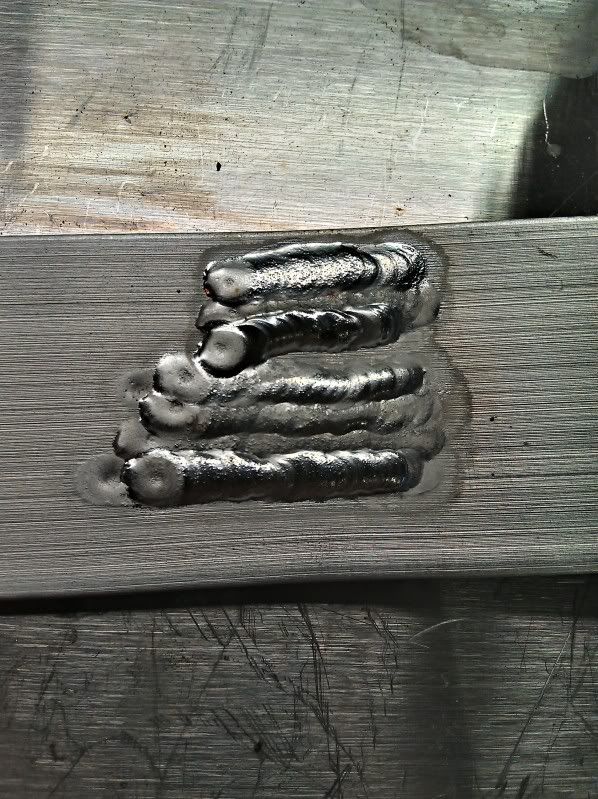I have a theory about what is going on that although I can't prove, I'll share it anyway. I believe that"gritty" looking texture is relatively high-melting temperature grains (or crystals...) in the alloy growing large, and as the rest of alloy (the lower melting temperature stuff) solidifies around those grains, it can move those larger grains above the surface, kind of like pushing icebergs up out of the water just before the rest of the water freezes. Leading to well, what looks like little structures pushed up out beyond the surface. Or maybe a better analogy, is if you ever remember a chemistry experiment where you soaked a rope with sugar water and let the sugar water wick into the rope and dry and let sugar crystals grow, you will remember that as you waited longer, the crystals grew larger. Same thing I believe happens with metal grain/crystal structure as you hold an alloy in in between its liquidus and solidus tempetatures. Those temperatures are, the temperature at which an alloy *begins* to melt (that is, some of the components are beginning to become liquid, but there are at the same time, some solid "chunks", namesly, the crystals or grains) and liquidus temperature is the temperature at which *all* of the components of an alloy are liquid (no chunks at all, just a perfectly fluid liquid.)
Now the fix can be two different ways. You can "fix" the appearance of this metallurgically, by selecting a different alloy that doesn't make these kind of structures. For example, try using a 5356 filler rod (magnesium alloy) instead of 4043 (silicon alloy.) Magnesium grains and silicon grains have different characteristics in terms of size, melting temperature, and so on. So they will not behave the same. You might even wish to try 1100 filler rod (which is pure aluminum, so it will freeze much more suddenly.)
The other way you can fix it is by changing your welding technique. And what I would advise here is, get it to freeze faster. The faster the puddle freezes, the smaller the grain structure will be. The more time the puddle takes in the "slushy" temperature range (between solidus and liquidus temperature of the alloy) the more opportunity the grains have to grow larger in size, and also to get pushed around as the rest of the lower melting temperature components freeze. How do you do that? 1. don't pre-heat the metal. Start with it relatively cold. 2. Welding with more heat input power. Crank up the current. Trying mixing in some helium if you are using pure argon to increase the temperatures. By welding with more power, you will travel faster, and the heat will not have as much time to 'soak' into the surrounding weldment. Then when you progress your weld bead, the temperature of the molten puddle will drop through the liquidus-solidus temperature range more quickly, due to the relatively cooler metal pulling away the temperature from it more quickly. You could also try using something like a large copper backer bar or other techniques. Easiest thing is to crank up the current and increase the travel speed. And wait for your work to cool on one weld bead before beginning the next bead in the sequence.
I might be wrong about the grittiness being silicon crystals, and it might in fact be oxidation. I can't really prove that it's not. But whatever the cause of this "grittiness", I've found that changing the metallurgy and/or changing the welding technique as discussed above can be solutions to this appearance.





